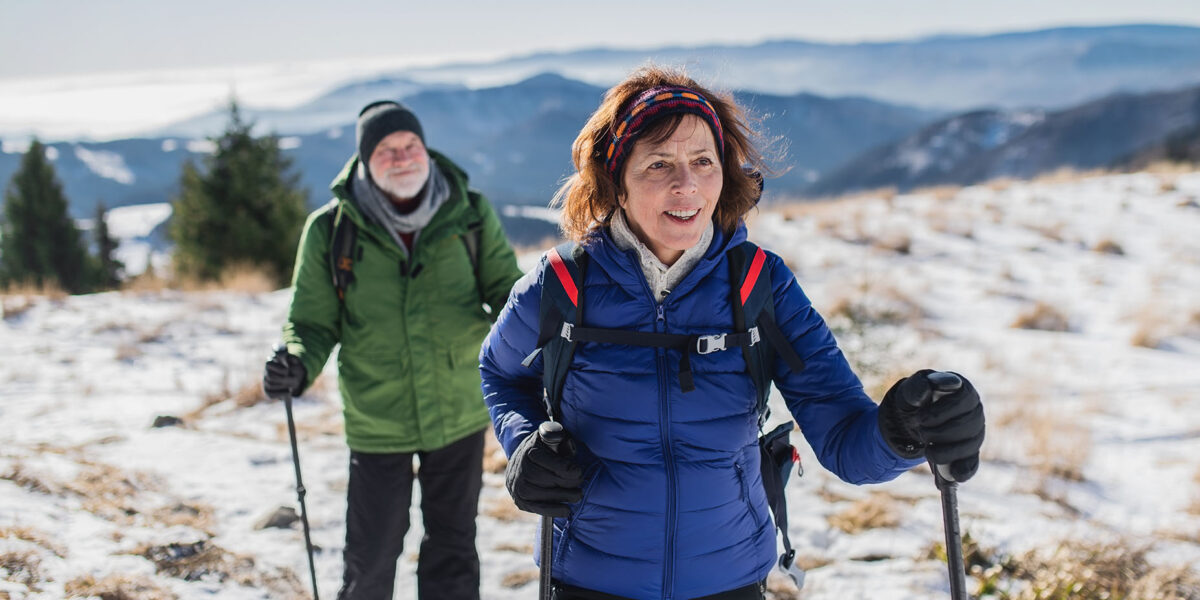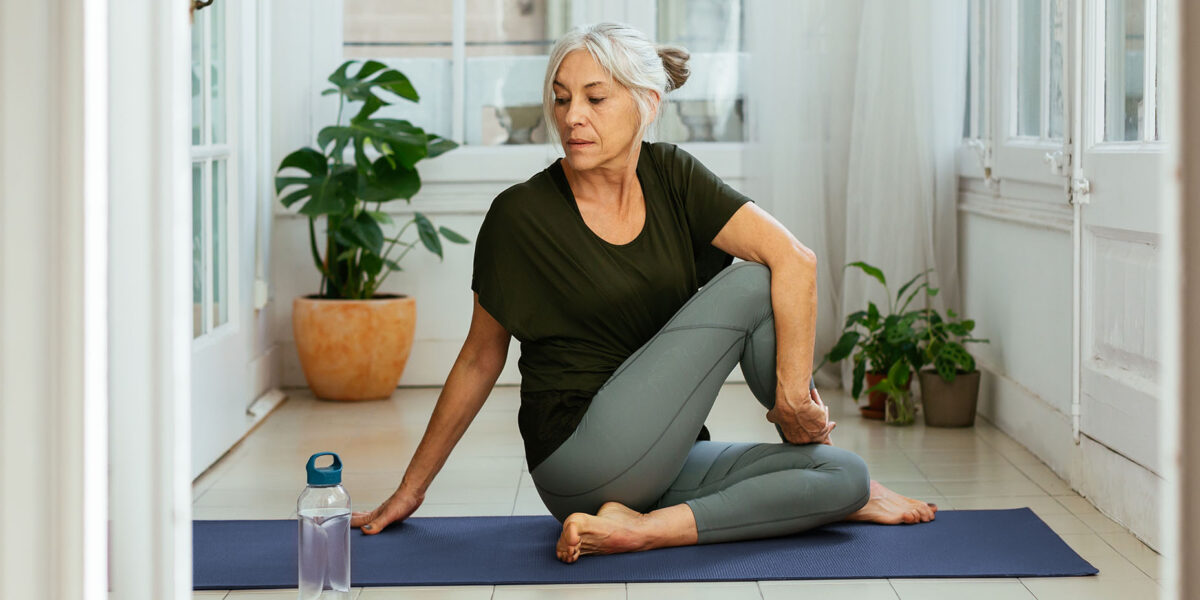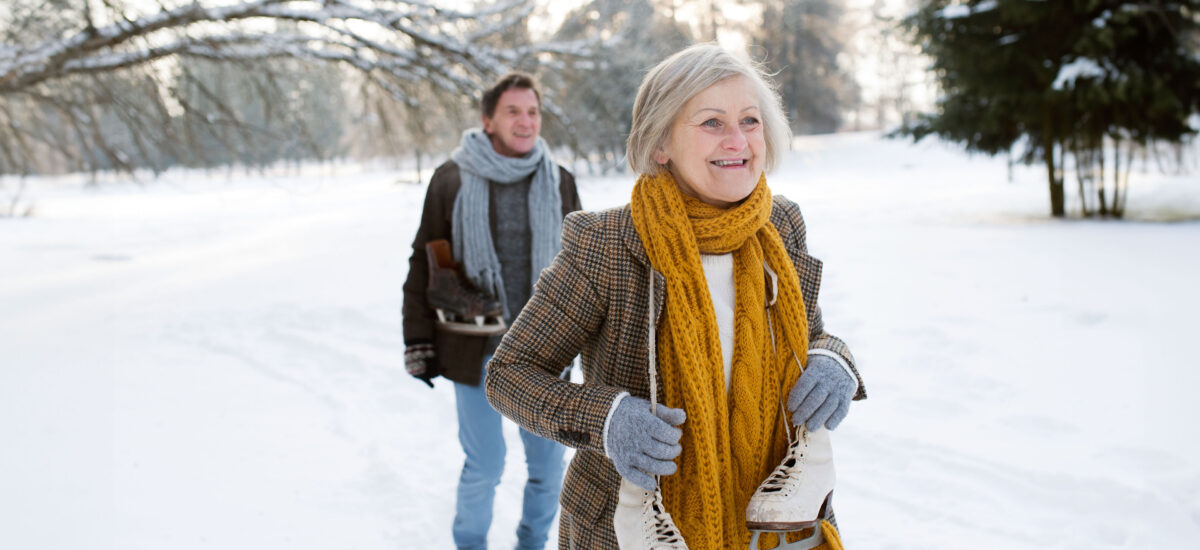It’s winter, and that spells trouble for your bones. As temperatures drop, the likelihood of bone fractures increases, scientists warn.[1]
A study backed by the National Osteoporosis Foundation revealed that colder weather leads to more hospitalizations due to bone fractures.[2]
The risk is especially high for hip fractures. It turns out these are more frequent in winter than in other seasons. In essence, the colder the months, the steeper the rise in fracture risks.[3]
Why Winter Is Bad For Your Bones
So, what exactly is it about the colder weather that makes the risk of fracture skyrocket? Well, there are several potential culprits at play.
You Can’t Get Enough Vitamin D
When winter rolls around, the chilly weather often keeps us indoors, away from the sunlight that’s crucial for our bodies to make vitamin D. It’s no wonder as many as 84.4% of people find themselves low on vitamin D during these months. Who wouldn’t choose a cozy fireside with hot chocolate over braving the freezing outdoors?
But here’s the catch: missing out on that vital sunlight can take a toll on our bone health. That’s because when we don’t get enough vitamin D, our bodies can’t absorb calcium effectively. This leads to less active osteoblasts (the cells that build bones) and a decrease in bone mineral density. So, even though it’s tempting to stay in the warmth, our bones need us to find that balance to stay healthy.[4][5]
Your Bones Stop Growing
Extreme cold can damage your bone tissue, according to some animal studies. It turns out that frigid conditions can interfere with the epiphyseal plate, the main growth area in long bones. This is where cartilage forms and eventually hardens into bone. But in extreme cold, around 5 degrees Fahrenheit, this growth process can be halted or even reversed, leading to potential bone tissue damage.[6].
But don’t worry. This is only a problem in extreme cold – so if the sun is shining and it’s above 5 degrees Fahrenheit, you can still enjoy a nice walk outside (as long as the conditions aren’t icy).
You’re More Likely To Slip
It’s not surprising that when sidewalks get icy, the likelihood of breaking a bone more than doubles. Ice makes surfaces slippery, greatly increasing the risk of falls that can lead to fractures.[7]

Your Joints Will Hurt
When it gets colder, those suffering from arthritis or osteoarthritis often experience more joint pain. This increase in discomfort is linked to falling barometric pressure, a common occurrence in cooler weather. Lower pressure can lead to expansion in our joints, which in turn triggers pain associated with arthritis. Additionally, cold temperatures tend to slow down blood circulation, making our joints feel stiffer and less flexible.[8].
Are You At Risk This Winter?
Some folks have a higher risk of experiencing bone fractures during the winter. Let’s take a look at the main factors that contribute to this increased risk.
Age and Gender
As you age, the potential for losing balance increases as your muscles and bones lose their strength and sturdiness. In the winter, slippery conditions can enhance the risk of falling, which in turn increases your chances of fracture[9][10].
Women, particularly those who have undergone menopause, are at a heightened risk of osteoporosis and fractures. One study even found that women aged 61 and older were 3.5 times more likely to experience a fracture during periods of snow and ice than men of the same age[7].
Previous Fracture History
A previous history of bone fractures increases the likelihood of experiencing additional fractures in cold weather. Surges of forearm fractures, which are the most common osteoporotic fractures, tend to occur during the winter months[2].
Interestingly, in one study, researchers found that previous fractures can increase the risk of future fractures beyond what can be explained by bone mineral density[11].
Tips for Protecting Your Bones in Cold Weather
Now that you understand how and why cold weather can impact your bones and increase your risk for fractures, let’s talk about some practical ways to protect your bones during the winter.

Stay Active
Keeping up with regular exercise is key to keeping your bones strong and lowering the risk of fractures, especially during the winter. Staying active doesn’t just help maintain bone health; it also improves your balance and coordination. This can be crucial in reducing the chances of falls, which are more common in the colder months.[12][13].
Diet and Supplements
Being physically active is great, but without the right nutrients, your bones won’t get stronger. They can’t! That’s because studies show bones need a combination of 16 different minerals and vitamins. And without these nutrients you can’t increase your bone density.
Ideally, your diet should be rich in whole foods, while minimizing processed items that can cause inflammation. To specifically support bone health, there are several key nutrients you should focus on. These include:
- Vitamin D
- Calcium
- Vitamin K2
- Magnesium
- Boron
As you’ll remember, vitamin D is vital in calcium absorption, a crucial nutrient for bone mineral density. Vitamin K2 assists calcium transport into your bones and away from soft tissues, while minerals like magnesium and boron support the bone-building process both directly and indirectly[14][15][16][17].
Even though a well-balanced diet can provide many of the nutrients you need, it can sometimes be tough to get enough through food alone, especially as you get older. This is particularly true for vitamin D, which can be hard to absorb from sunlight during the winter months.
This is where high-quality supplements can be very helpful. Products like AlgaeCal Plus are designed to include all the essential nutrients for bone health, and they’re made in forms that your body can easily absorb and use.
Preventing Falls
Here’s 4 easy ways to reduce your chances of falling:
- Choose the Right Footwear: Wear shoes that provide good grip and support.
- Clear Pathways: Make sure walkways are free from obstacles.
- Secure Rugs and Carpets: Fix them firmly to the floor to avoid slipping.
- Improve Lighting and Install Handrails: Ensure staircases are well-lit and have sturdy handrails.
By following these simple steps, you can significantly lower your chances of falling and stay safe during the icy winter months.
Takeaway
In the warmer months, it’s effortless to stay active without much concern. However, as the weather turns colder, the risk of fractures and other bone problems increases. To prepare for a healthy winter, it’s important to focus on your diet, supplements, and exercise routine. Also, if you’re concerned about slipping and falling, take some time to winter-proof your home. Make sure that areas like stairs, walkways, and other places where you might slip are safe and prepared for the colder weather.
Frequently Asked Questions
Can the weather affect osteoporosis?
Yes, weather can impact bone health and osteoporosis. Cold temperatures have been linked to exacerbating bone loss and increasing the risk of fractures. The winter also increases the incidence of slipping and falling, along with the prevalence of vitamin D deficiency.
What is the best climate for osteoporosis?
The best climate for osteoporosis prevention is warm weather, as studies show that exposure to warmer ambient temperatures can increase bone strength and prevent the loss of bone density.
Does osteoporosis hurt in cold weather?
Cold weather may worsen the symptoms of osteoporosis and increase joint pain in those with arthritis.
How can I protect my bones during the winter months?
Stay active, eat healthily, and take precautions to protect your bones during the colder winter months.
What is the recommended daily intake of vitamin D for adults over 50?
Adults over 50 should consume 800 to 1,000 International Units (IU) of vitamin D daily to ensure adequate levels of this essential nutrient.





Virginia Page
February 1, 2024 , 11:51 amYour article attributes increased winter joint pain to “falling barometric pressure common in cooler weather “. Cool air is denser and heavier than warm air and settles causing the barometric pressure to rise not fall. If the pressure is falling that air is either getting warmer or wetter. It is true that the lower the pressure, the expansion in the joint would result in increased frictional pain.
My personal experience is that whenever the pressure is either rising or falling pain results as the joints respond with expansion or contraction. Once the pressure stabilizes the pain settles down somewhat.